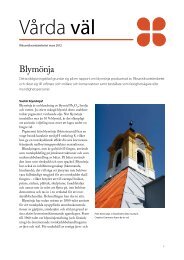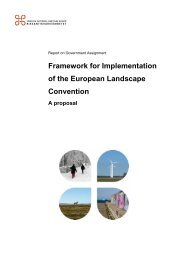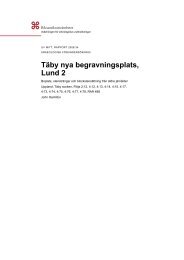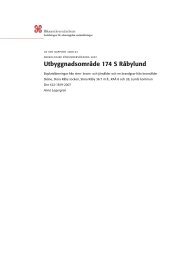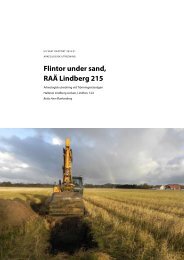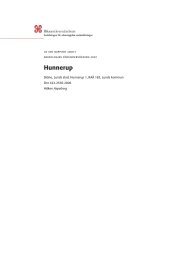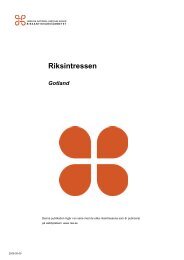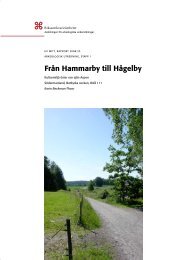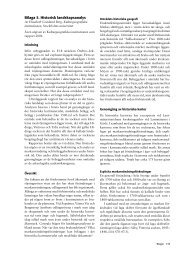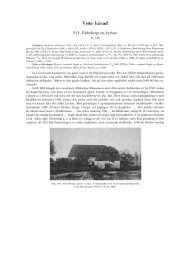Medeltidsmästarnas färgval - Riksantikvarieämbetet
Medeltidsmästarnas färgval - Riksantikvarieämbetet
Medeltidsmästarnas färgval - Riksantikvarieämbetet
- No tags were found...
You also want an ePaper? Increase the reach of your titles
YUMPU automatically turns print PDFs into web optimized ePapers that Google loves.
Medeltidsmästarnas färgval 72. AbstractThe present study has aimed at investigations of mediaeval wall paintings in Swedishchurches. Pigments, and sometimes also binding media in addition to lime, have beenchemically analyzed. Eleven churches from three regions (Uppland, Gotland and Scania)have been selected for this study. The paintings date from around 1100 to 1500. Manyfamous painters like Albertus Pictor, Johannes Iwan, Johannes Rosenrod and the so-calledPassion Master are represented in the study.In total ca 200 extremely small samples have been taken from the mural paintings. Theinorganic pigments were determined with a LEO 1455VP scanning electron microscopebelonging to the Central Board of National Antiquities (RAÄ), equipped with an EDX unitfor X-ray microanalysis. Organic substances could be detected with an FTIR spectrometer,or else with external instruments at Danish or German laboratories.Almost all wall paintings from the 12:th century reveal the use of natural, commonpigments like soot, iron oxides and other “earth pigments”, and gypsum. More unusualpigments from this period are cinnabar, massicot, minium, plattnerite (oxidized leadpigments), malachite, atacamite, ultramarine and the black modification of mercurysulphide called metacinnabarite. With time, more and more pigments are introduced. Themural paintings of Albertus Pictor and his workshop originate from the decades around1500. In these, cinnabar seems to be more frequently used, at the same time as ultramarineis replaced by azurite. The yellow haloes were usually painted with lead tin yellow. In twochurches (Härkeberga and Täby) the dark colour of Caput mortuum has been used. It isclear that Albertus Pictor, who lived at the end of the Middle Ages, has had the advantageof a larger choice of pigments.In the church paintings examined, it is evident that green colours have been painted eitherwith malachite or with atacamite, and that the two green pigments are equally common.Lead white and the two bright lead pigments massicot and minium have often beenoxidized to (usually) black plattnerite (lead dioxide) on the lime ground. A strange pigmentfound is a yellow substance consisting of a copper vanadate mineral, unknown exactlywhich. So far it is not known to have been used in wall paintings outside Sweden. We haveonly identified one organic dye, viz. Brazil Red, in the church of Täby. However, it is very




